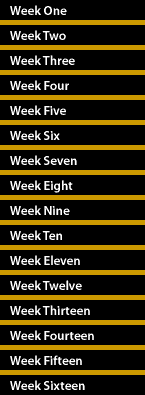 |
 |
 |
 |

Air
Activities
Air Is
Something Special and It Is Real!
Did you ever "collect" air? You cannot see air, and you are
not able to detect that you are holding air. You can however trap and
contain air so that it seems more real, and you can manipulate it. Bottles,
balloons, balls, our lungs, and plastic bags can all be used to collect
air. Fans, vacuum cleaners, hair dryers, and people can blow air. You
can feel air by running or standing in the wind. You can test the effect
of blowing wind by putting things in the wind.
Using the above ideas,
invite your students to explore and describe air. What other matter is
air like? Collect air and squeeze it. Blow up a balloon and release it
so that it jets around the room, and then blow up a balloon until it bursts
and describe what is happening in terms of the effect of the air. What
happens when you blow up two balloons and put one in the freezer and one
in the hot sun for a while and then compare them? Are they different sizes,
do they fall at different rates, or do they squeeze differently?
Put air in a 2-liter
pop bottle at room temperature and then attach a deflated balloon to the
top of the bottle by stretching the mouth of the balloon over the mouth
of the bottle. Then put the pop bottle alternately in hot and cold water
baths and notice the effect on the balloon as air expands and contracts.
Wind Effects!
You can explore the effects of moving air by observing the action of wind
on other materials. Classic investigations include making and testing
pinwheels, kites, paper airplanes, and watching clouds, dust, and trash
blowing outside (go outside and find out how the wind is blowing by observing
the effects). You can measure the relative strength (or speed) of wind
with wind chimes that you invent and build. Is the chime quiet, just making
a little noise, or really clanging?
Wind movement in the
classroom can be explored by hanging tissue paper strips around the room
and from the ceiling. Watch what happens when you move, turn on a fan,
or open a window.
Optional: An advanced
investigation is to make a helium balloon neutrally buoyant by tying 3X5
cards to the string so that the balloon sinks and then tearing off pieces
until it neither sinks nor floats in the air. The balloon is a good indicator
of how the air is moving as it will go up or down or sideways in drafts.
Evaporation and
Condensation Connect People to the Hydrosphere
Discovering that a part of the air is water helps you to connect the atmosphere
and the hydrosphere. Where does the water come from on the outside of
a glass with ice cold liquid inside (or also on the bathroom mirror)?
Did the glass leak? Have students test their theories. For instance, by
using colored water in the glass you can see if the water on the outside
came from inside the glass. Many investigations can follow. How cold does
a glass need to be for condensation to occur? Is cold necessary for condensation?
When does dew fall? Is cold necessary for dew? Is there dew in the desert?
On the other hand,
where does the water in an open jar go as it seems to disappear? Do animals
come out at night and drink it? Does temperature make a difference as
to the rate of disappearance? Does water seem to disappear from a sealed
jar?
Cloud Observations
Students may begin to discover mechanics that create the water cycle.
Water can change to a gas and become a part of the air, and water can
change from a gas in the air into water, and presto--clouds and rain form.
A cloud in a bottle can then be created by putting some warm drops of
liquid water in a glass soda bottle and, after standing awhile, dropping
a smoking match in the bottle. After the smoke clears, suck on the bottle
and a cloud should form since reducing the pressure reduces the temperature
and condensation occurs on the smoke particles.
Weather and "Ocean
Water Moving"
Do a cloud exploration. How often do you see clouds? What do the clouds
look like? Can you create a criteria for sorting and classifying clouds?
Does it feel warmer in the sun or in the shade of a cloud? Wait for a
foggy day and go outside to study a "cloud on the ground." Shine
flashlights in the fog. Carry containers of ice and check for condensation.
Run around to see if you get wet. Is it raining in the cloud?
At this point older
students may be ready to discuss explanations about where clouds get water
and to describe what the water cycle is.
Finally, students
could predict and graph the weather by using terms and criteria that describe
the weather such as sunny, partly cloudy, cloudy, rainy, how much wind
from which direction, temperature, etc.
Materials
- air containers
(bottles, balloons, plastic bags, etc.)
- electric fan or
hair dryer
- 2-liter soda bottle
- items that respond
to air currents (pinwheels, kites, paper airplanes, wind chimes, tissue
paper)
- 3X5 cards
- food coloring
- glass soda bottle
- helium balloon
(optional)
- graph paper
Other Questions
for Students
- Prove that there
is air in the room. Move your hand quickly through the air and feel
it, fill up balloons, etc. You live in an ocean of air—at the bottom
where the air is thickest.
- Can you see air?
(Sometime, yes. But not as clouds or fog, which are water droplets.
Look at an object across the room with a toaster turned on just below
your line of sight. The object you're looking at may shimmer and waver
because the hot air rising from the toaster in front of the object has
different optical properties, or refractive index, which causes the
shimmering. You are seeing the difference between hot air and cold air.)
- What causes air
to change? (Air motion is caused by differential heating of the atmosphere
by the sun. Some parts get hotter than others [e.g., air over a dark
plowed field gets warmer than air over a cool forest]. Hot air rises
and begins a circulation pattern in the atmosphere.)
- How does water
exist in air? (Water exists in air as a solid, liquid and gas. To show
that there is water in the air, use a cold soda can to condense water
onto the surface. NOTE: Water vapor—a gas—is invisible. The
steam you see rising from a kettle is not vapor. It is tiny water drops
already condensed. Clouds are the same--not water vapor—but water
droplets. Water vapor is individual molecules of water acting as a gas.
Cloud particles or aerosols are tiny drops of water that contain tens
of billions of molecules of water. Frozen water in the air is snow.)
- What are the different
kinds of clouds? (This activity might be fun to try on a nice day outside--see
http://www.bham.ac.uk/geography/met/clouds/cloud.htm
or http://www.weather.com/education/.)
Teacher References
- Earth at Hand,
NSTA, 1993.
- AIMS. "Overhead
and Underfoot" (Revised Edition). AIMS
Education Foundation. Fresno, CA. 1994.
Children's References
- Branley, Franklyn
M. "Air Is All Around You." Harper Collins. NY. 1986.
- Branley, Franklyn
M. "Flash, Crash, Rumble, & Roll." Harper Collins. NY.
1985.
- Berger, Melvin.
"Seasons." Doubleday. 1990.
- de Paola, Tomie.
"The Cloud Book." Holiday House, 1975.
- Ets, Marie Hall.
"Gilberto and the Wind." Puffin Books, 1978.
- Gibbons, Gail.
"Seasons of Arnold's Apple Tree." Voyager/HBJ. 1984.
- Gibbons, Gail.
"Weather Words and What They Mean." Holiday. 1990.
- Groth-Fleming,
Candace. "Professor Fergus Fahrenheit & His Wonderful Weather
Machine." Simon & Schuster. 1994
- Kahe, Jonathan
D. "Weather Watch Forecasting Weather." Learner Publications.
1996.
- Morgan, Allen.
"Sadie and the Snowman." NY. Scholastic. 1985.
- McCloskey, Robt.
"Time of Wonder." Puffin. 1985.
- Schmit, Eleanore
"The Air Around Us." North-South Books. 1992.
- Simon, Seymour.
"Weather." Morrow Junior Books. 1993.
- Tresselt, Alvin.
"Hide and Seek Fog." Lothrop, Lee & Shepard Books. NY.
1988.
- Weisner, David.
"Hurricane." Clarion. 1991.
[
Back
to Outline ]
[
Home ] [ Intro
] [ Guide ] [
Classroom ]
|
 |
 |




|
 |